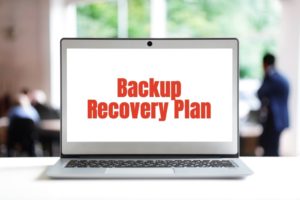When you work remotely, occasionally or every day, nothing matters more than communication. Staying in touch with your distant colleagues is the key to completing projects, attending meetings, and successfully collaborating. Fortunately, connecting is easier than it has ever been before. Between mobile devices and VOIP, you can connect to your team from almost anywhere in the world. But it’s a lot easier to do if you’re prepared.
Making your home office or favorite shared working space is a part of the course, but the true challenge is achieving easy calls when outside your comfort zone. How do you ensure good sound quality in a hotel room, on-site with your client, or on the road? The key is a well-packed VOIP kit that has everything you need to connect, hear, and be heard from almost anywhere in the world.
Here’s how to build one:
High-Speed Mobile Hotspot
The first thing you need is a mobile hotspot you can rely on. These transform cellphone network signal into a wifi network your devices can connect to. Not only does it ensure that you can connect from nearly anywhere, it also keeps you safe from honey-pot traps hackers set with free wifi networks. You won’t have to rely on hotel wifi, and you can connect anywhere your cellphone gets signal. With varying degrees of connection speed.
Soft Can Headphones or High-Quality Earbuds?
If you’re not in a sound-studio quality office prepared to filter audio, you’ll need some headphones so you can hear the conference without your mic sending feedback or echo. But the choice of headphones is highly personal. Some swear that large pillowy can-style headphones are the only way to hear the call clearly while many of us live with a pair of earbuds seemingly permanently attached.
For your kit, the difference matters only to you. Get a spare pair of your favorite type of headphones and pack them as part of your VOIP call travel kit.
Integral Microphone Headset
With a headset, you can transform any modern mobile device into a VOIP phone. All you need is earphones to hear and a microphone to be heard. That said, the microphone quality is important. Many can make do with a webcam or laptop that has an integral microphone, but the quality of how you sound is significantly improved with a real microphone on a headset positioned near your mouth. Be sure your headphones have a built-in mic that transmits in decent quality.
Camera-Bearing Laptop
VOIP platforms often include an option to make video calls, which can become popular depending on the team. If there’s a chance you’ll be called on to appear on video, you’ll want a laptop that has video capability. This is your first or last line solution to the video calls, giving you a place to start or a fall-back position if you choose to use additional cameras instead.
Separate Web Camera
You will probably also want to pack an external web camera, and don’t be shy about investing in some quality here. Your webcam will enable video call options that a laptop camera cannot. You can point it at items, paperwork, and other people without pointing your laptop. You can also upgrade your image or sound quality by choosing a camera with better capabilities than your laptop.
The separate web camera also gives you an alternative to the laptop camera should one or the other fail at an inopportune moment.
Mobile Charging Battery
Next, think about power SNAFUs you’ve experienced in the past. Sometimes, your best friend when telecommuting on the road is a portable charging battery. Something you can charge up at home or in a hotel room, then bring life back to a phone or laptop that has died right when you need it most. Or it can be used to keep your laptop alive longer off-grid when you have to hold a meeting from a place with no outlets. Just one portable battery in your go-bag can make a big difference when it’s needed.
For the truly rugged remote professionals, consider a solar-recharging portable battery. No outlets required.
Charging & Data Cables
Finally, don’t forget all the accouterments for all this mobile tech. You’ll need at least one charging cable for each one of your devices. At least these days, they can all share a few USB power ports instead of each having an individual power adapter. So remember your USB power strip just in case. Take your laptop power adapter, and whatever you need to charge the portable battery. We all know what it feels like to have everything you need but a power cord.
If you enjoy working remotely using the tools of today’s mobile workforce, you might as well the best tools for the job. By packing an effective VOIP call kit, you can optimize sound and signal quality no matter where you’re working from. For more on how to get the best VOIP performance possible, contact us today!



